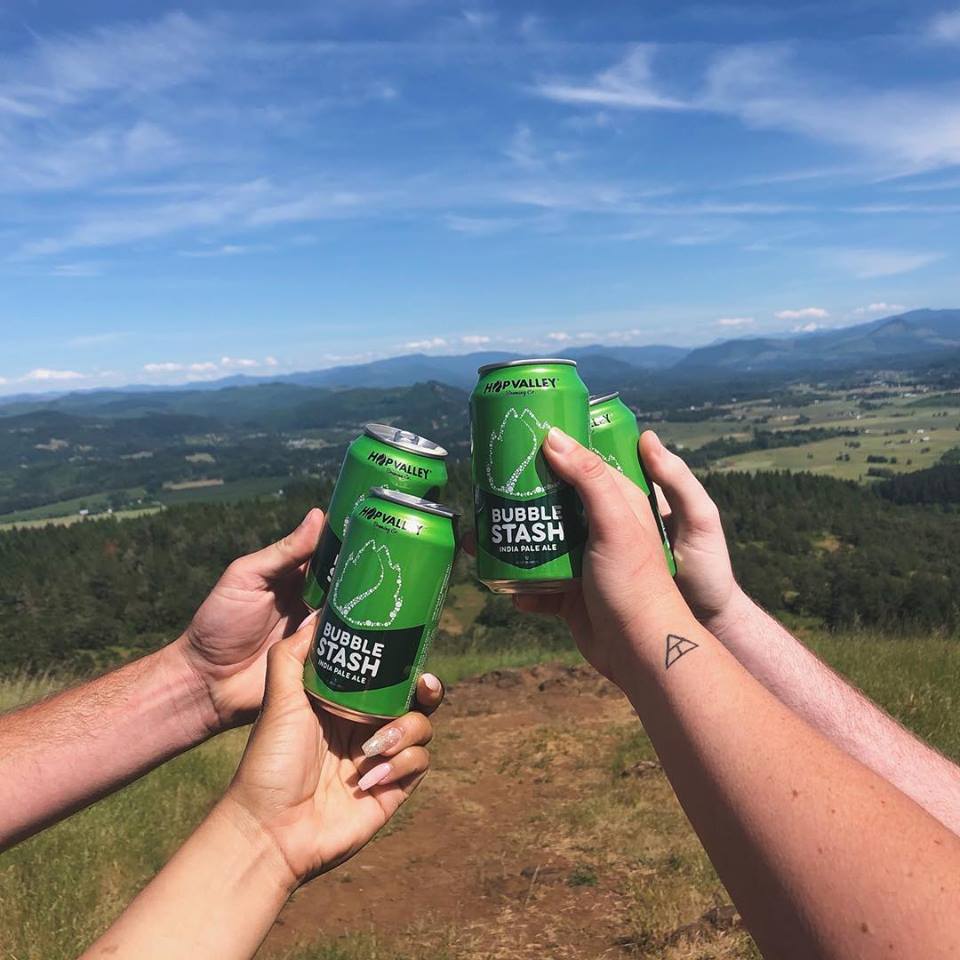Seven years ago in Eugene, Ore., Patrick Whiting of Hop Valley Brewing brewed his first batch of beer using a novel form of hops largely unknown among brewers, let alone used in the brewing process.
Swapping out the ubiquitous pelletized hops for a fine hop powder collected as a byproduct of hop processing, Whiting crafted a pale ale that came out of tanks with bright citrus, floral and pine aromas and a level of bitterness far below the West Coast IPAs typical during that time.
In partnership with hop processor Hopunion (now Yakima Chief Hops), Hop Valley and another small Oregon brewer scored the first samples of “hop dust” and set out to find an answer to the question: Could this fragrant, sticky hop powder scraped out of the inside of the hop-pellet hammer mill work in beer?
“It was basically hop dust, powderized lupulin glands, the part of the hop where all the oils and aromas are contained,” Whiting says. Up to that point, the dank powder was nothing more than a nuisance, a substance that had to be scraped off processing machines, swept off the floors and tossed into the trash.
But after that first brew, it was immediately clear the dust was anything but trash; it was green gold dust, the purest, most-potent and concentrated expression of hops available.
Whiting and his co-conspirators at Hop Valley named the beer Bubble Stash. Drinkers loved it.
“You’ve got to remember, this was at a time when everyone out here was making bitter, bitter, bitter IPAs,” Whiting says. “People were chasing IBUs. And with this beer, we were saying we can give you a better hop experience with just 30 or 40 IBUs. Today, that’s what everyone wants.”
That’s plainly evident in the juicy/hazy craze that kicked off in earnest in 2017 and continues to gain momentum this year. Prized for their explosive citrus and floral notes, creamy mouthfeel and distinct lack of bitterness, juicy IPAs are flooding the craft market today, luring brewers of all stripes, including larger brewers such as Samuel Adams, Firestone Walker and New Belgium. MillerCoors-owned craft brand Saint Archer also plans to drop a hazy IPA this fall. Some, but not all, of these beers contain the hop dust, also called lupulin powder, that Bubble Stash pioneered in early 2011.
The beer, which has evolved from its original recipe into an IPA that uses Mosaic hops, is clean, clear and offers the same bright, sweet tropical fruit and citrus notes absent the assertive bitterness typical of the IPAs of yesteryear. It also has moved from an uber-limited release available on draft only to a core, year-round offering packaged in 12-ounce cans.
It is now Hop Valley’s No. 3-selling beer, and among the fastest-growing beers in its portfolio and in the entire Pacific Northwest. Bubble Stash ranks as the No. 2 growth craft can in Oregon in both sales volume and dollars, according to year-to-date Nielsen Oregon food scan data through Aug. 18.
Bubble Stash’s success has spawned a new round of innovation at Hop Valley; the brewery has released a version with mango puree called Mango Stash and an imperial version called Cryo Stash.
From Hop Valley to the world
While the beer has been highly sought-after by Hop Valley fans since that first brew, it remained a relatively small part of the brewery’s portfolio simply because of supply.
Whiting requested all of the dust he could get his hands on, but because the powder was a byproduct of manufacturing pelletized hops, there was no production process designed to derive just the dust. “We were just taking it in whenever it became available, which typically was only in the late fall after harvest and processing,” Whiting says. “And once they were done processing for that year’s harvest, that was it.”
Hop Valley’s success with — and insatiable demand for — the product wasn’t lost on Yakima Chief.
“When we saw that, gosh, there’s all this interest at the customer level, so we have to figure out a way to make it, and to make it food safe,” says Steve Carpenter, chief supply chain officer for Yakima Chief Hops. “Because so much of it would be used post-fermentation, it was critical we could assure the product was food safe. We don’t want to be just sweeping up piles on the floor and sending them to breweries.”
The same year Yakima Chief acquired Hopunion, in 2014, the company invented a new process to corral and preserve this concentrated lupulin product, which involves deep freezing the hops with nitrogen and delicate handling to preserve the structure of the lupulin glands, the tiny pods on hop flowers that hold the coveted aromas and oils. They then took the separated lupulin glands and formed them into pellets, which were easier to handle and more efficient than powder.
They dubbed the product Cryo Hops®, and the next year built a larger processing facility to handle booming demand for the concentrated pellets.
“Once we started to get it out to more customers, it was clear we hit on something,” Carpenter says. “Brewers tell us that not only does it help to establish unique hop flavors and aromas, but it also helps create better efficiencies.”
While still a fraction of Yakima Chief’s total business, Cryo Hops® are its fastest-growing product by far, Carpenter says.
It built a full-scale production facility in 2016, expanded in 2017 and is amid another expansion that will be complete next year. Carpenter says he expects demand to continue to outpace supply.
“We’re very optimistic,” he says. “There’s just a passion within the craft segment to make hop-forward beers, and it’s not just in North America. In the U.K. hop-forward beers are growing at a good pace, and we’re starting to see some movement in Europe and Asia. This is just the beginning.”

